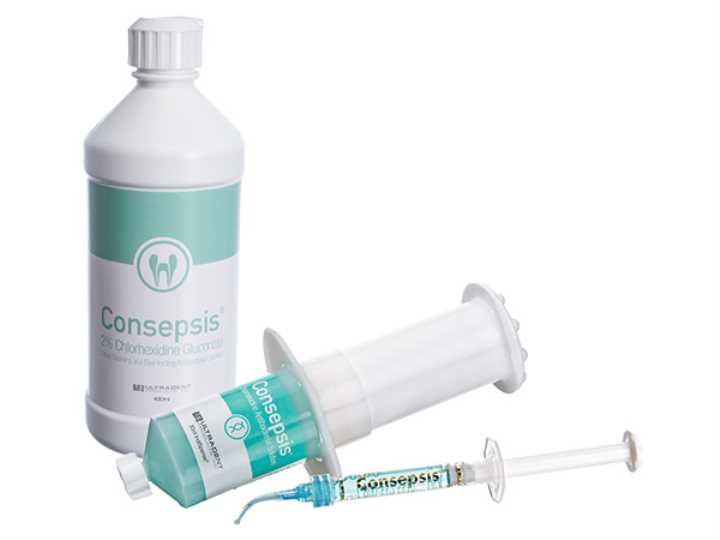Ultradent’s Trench Talk Series 1

To understand better Ultradent products you purchased from us, Ultradent created Trench Talk that can answer most of frequently asked questions to assists you in maximizing your usage of your favorite Ultradent products.
Chlorhexidine in PUB
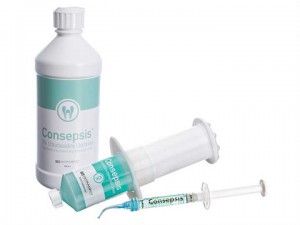
Q: How long is the effect of the chlorhexidine in Peak Universal Bond?
A: The chlorhexidine will last indefinitely as long as the bond is good. The chlorhexidine is part of the adhesive chemistry and will become ineffective if there is a breakdown in the adhesive itself. So, if there is a leakage in the bond and it needs to be repair then the chlorhexidine will become ineffective.
Curing Bulk Fill
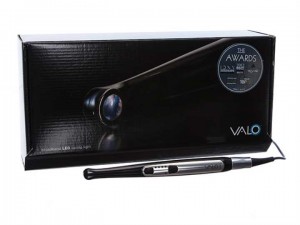
Q: What do we recommend as the best cure time for bulk-fills? Bulk fill is obviously here to stay—I contend that the VALO would still be the ‘light of choice’ for bulk filling.
A: VALO is an excellent choice for curing bulk-fill restorations. However, we simply can’t provide a general statements on bulk-fill curing times without testing each of them individually. We always recommend to follow the manufacturers guidelines. Due to VALO’s collimated beam, homogenous profile, and multiple wavelengths we are confident that VALO will, in fact, outperform any other light doing the same job.
Below is an example of what Kerr recommends for curing SonicFill, the market leader in bulk-fill composites:
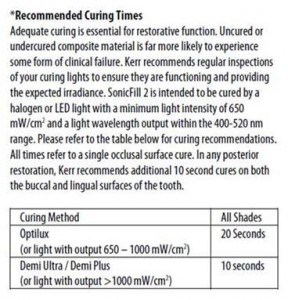
Absorption Rates in Cord
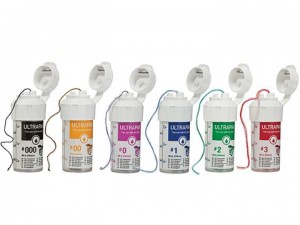
Q: What packing cord has the best absorption rate within the dental industry?
A: In a study that was performed with the top 8 packing cords, Ultrapak was shown to absorb hemostatic solutions the best. We performed tests with Viscostat Clear, Viscostat, and water and in all three cases Ultrapak scored the highest in its ability to absorb the solution. This industry leading absorption rate leads to quicker hemostasis, less wasted hemostatic agents like Viscostat, and ultimately an improved experience for the patient.
Enamelast vs. Vanish
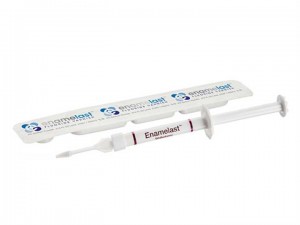
Q: Lately I’ve heard of several areas where 3M Reps have been going after our Enamelast customers by claiming Vanish is better because it “migrates” into the interproximal areas. They claim that Enamelast isn’t as good because it sticks to the teeth too well and doesn’t flow to any additional areas. They claim this lack of “migration” means only the parts of the tooth that actually have Enamelast applied are getting the benefit of fluoride and that is why we say “apply to as many tooth surfaces as possible”, and since 3M’s “migrates” you only have to apply it to one surface. How do we respond to this?
A: This claim by 3M is quite interesting because they are correct in saying that Vanish migrates……it does…….it migrates and flows right off the tooth and is swallowed. 🙂 One of the shortfalls of Vanish is its inability to adhere to the tooth and they are putting quite a spin on it to make that sound desirable. In the attached PowerPoint slides you will see how Vanish softens, and bubbles up and eventually lifts off the tooth. Obviously if the varnish doesn’t adhere to the tooth, the fluoride isn’t getting into the enamel and the patient isn’t getting much of a benefit. Not only that, but the patient can’t be having a fun experience with the varnish coming off in their mouth like that. Yuck! Furthermore, most clinicians understand that fluoride does not necessarily need to be applied to every exposed area of the enamel. The most weakened areas of enamel will draw the fluoride in whether or not the varnish was directly applied to that area or not. That’s just how fluoride works.
File Diameter & Taper
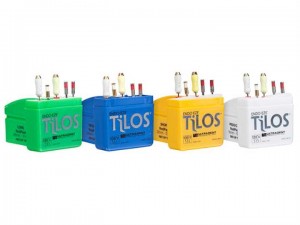
Q: What are we referring to when we talk about a file diameter and taper? Or what exactly does a 30/.04 mean?
A: The file diameter is the tip base diameter measurement on the end of the file (red arrow). It tells the dentist how wide the final shape diameter will be. For example, if this file is a 30/.04 file, it means the measurement on the end of the file is .30mm.

Taper: If this were a 30/.04 file, that means the very end of the file diameter is .30mm and each millimeter from the tip increases .04mm as it makes its way to the handle of the file. It starts out as a 0.30mm on the tip and then increases to 0.34mm, 0.38mm, 0.42mm, etc.
